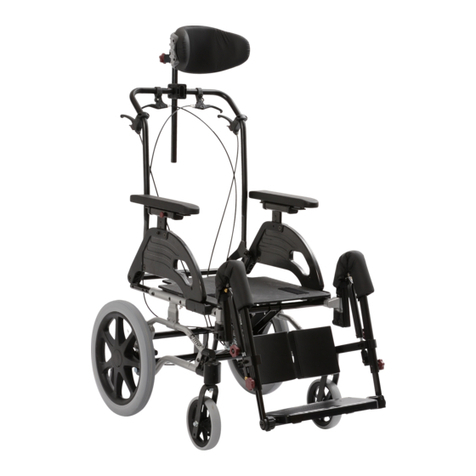2.0 QUICK REFERENCE
The content of this page is a summary
of the whole manual. It gives you a brief
introduction to the use and care of the
Netti Mini wheelchair.
The quick reference is not a
replacement for the manual, only a
reminder/check list.
• Unpack the wheelchair (Chapter 6.1)
• Mount the main wheels (Chapter 6.2)
• Mount the front castors (Chapter 6.3)
• Put the backrest back, and mount the
recline gas strut to the backrest using the
locking bolt. (Chapter 6.7)
• Mount the arm supports (Chapter 6.12)
• Mount the cushions (Chapter 6.13)
• Mount the foot supports (Chapter 6.15)
• Adjust the push handles (Chapter 6.17)
• Mount the head support (Chapter 6.16)
• Mount accessory. (See chapter 5. for more
information. Mounting descriptions will
accompany the accessory.)
For troubleshooting, see chapter 10.
For adjustments see chapters 6
Drive carefully!
Be aware that friction against push
rims can create a warm surface.
Salt water can increase risk of
corrosion. Further precautions related
to environmental conditions not
needed.
When the chair is tilted rearwards,
the anti tips and brakes should
always be in use.
Be sure to lock all handles properly.
The anti-tips should always be used
for the safety of the user.
Surface temperature of metal parts in
frame structure might increase when
exposed to direct sunlight.
Never stand on the foot supports due
to risk of tipping forwards.
Never lift the wheelchair by the foot
supports or arm supports.
Product configuration may vary
between different countries.
For visually impaired people,
manuals and catalogues can be
downloaded at www.alurehab.com
If in doubt - contact your dealer!




























